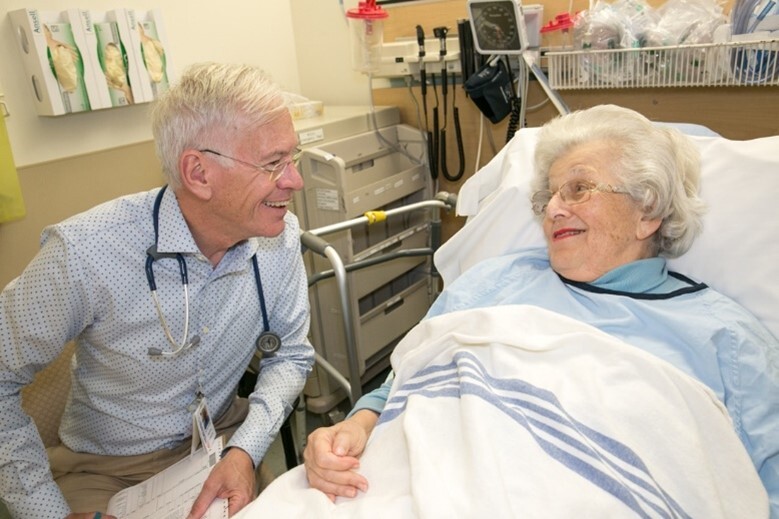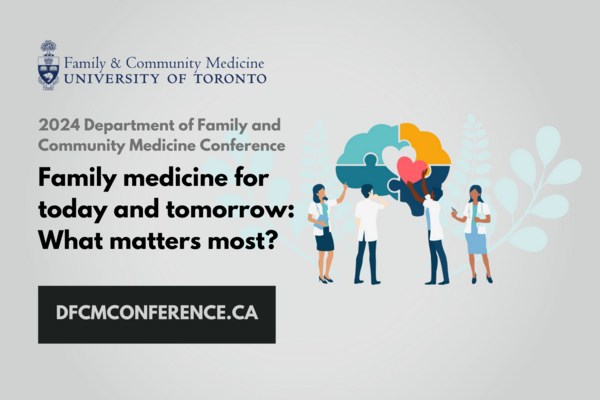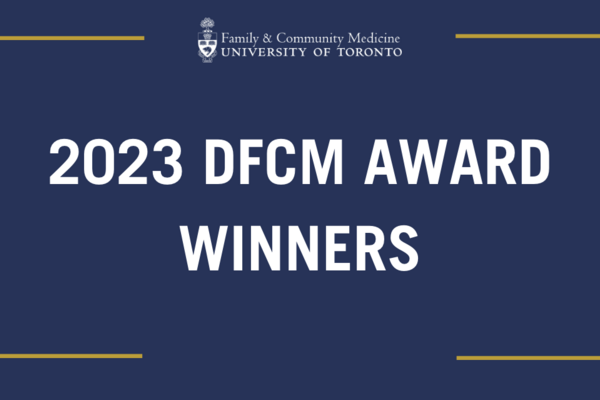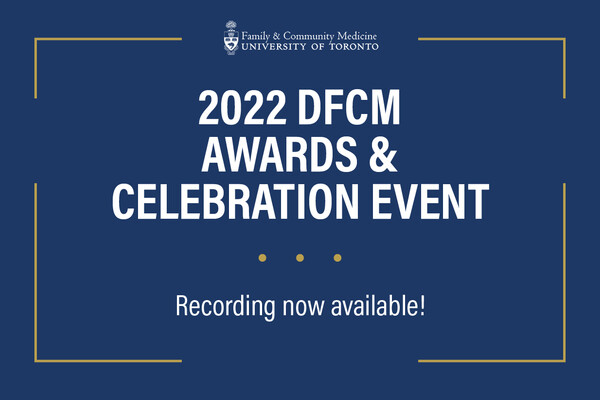The front door of primary care: Family and emergency doctors advocate for tailored care for older people

Emergency medicine has quickly become an extensive front-line department as our population gets older—now with 7 million Canadians age 65 and up, a 2.1% increase from the last census. The first wave of the Baby Boom turned 75 last year. With many strains on our health system, COVID among them, emergency departments (ED) see more older people than ever before. Yet, EDs still lack some basic aspects needed to provide excellent care for this large cohort.
We need to update our facilities, change our attitudes, and enhance both staffing and processes in EDs, say two faculty members from the University of Toronto’s Department of Family and Community Medicine (DFCM), both emergency physicians.
“Emergency medicine has intensified during the pandemic to become the front door of primary care,” says Dr. Tessa Ringer, DFCM Assistant Professor and an emergency doctor at UHN – Toronto General Hospital, who participated in a position statement on the topic for the Canadian Association of Emergency Physicians (CAEP).
“However, now there is a clear mismatch between our needs and our departments. Our whole health care system was built in the 50s, geared towards the younger population at the time,” Ringer says.
“Healthcare has improved so much, coinciding with the lifespans of the Baby Boomers. People are living longer to 85, 95. It’s great; it’s what we all want for ourselves and loved ones. But our health systems are not prepared for our longer lifespans,” says Dr. Don Melady, DFCM Associate Professor and emergency physician at Mount Sinai Hospital, who co-authored a recent book describing the creation of geriatric EDs.
Recently, waves of change are starting to happen, including the $52M-fund donated to UHN to transform emergency care for older adults and to establish the new Myrna Daniels Seniors Emergency Medicine Centre, the beginning of a positive shift for Geriatric Emergency Medicine (Geri EM or GEM). “This is a fantastic start and shows the potential for more change in health care,” says Ringer, as a UHN doctor.
In their new publications, Ringer, Melady and their colleagues provide tips for health care workers on how to keep pushing for more change, create geriatric EDs and be an advocate for Geriatric Emergency care.
Family doctors and emergency doctors supporting older Baby Boomers
Ringer was part of a national team that wrote the position statement, “Care of Older People in Canadian Emergency Departments,” a list of eight recommendations ratified by CAEP and published in the Canadian Journal of Emergency Medicine in 2021. The statement provides practical tips for hospital staff to make improvements and is based on current research. Colleagues who contributed to the statement include Dr. Tahara Bhate and Dr. Alice Gray, other Toronto emergency doctors.
At UHN, Ringer became the Medical Director of the Geriatric Emergency Department Initiative “Our statement encourages other doctors and health workers to do the same at their workplaces—step forward and be a voice for GEM,” she adds.
Melady and his colleague Dr. John Schumacher at the University of Maryland published a book in 2021 called Creating a Geriatric Emergency Department: A Practical Guide. The book is a how-to guide with more detailed instructions about Geriatric ED care for Canadian and global health systems that gives guidance about how to implement the CAEP statement.
It’s imperative to focus on GEM now since the change is already happening, Melady says. “Currently, 1 in 5 ED patients are over 65. In 2030, it will be 1 in 4. Now, every doctor is a geriatric doctor by necessity, and every department is a geriatric department.”
While policymakers are figuring out how to adapt the system, Ringer and Melady think family doctors have a big role to play in driving the change at the hospital level—since GEM is an undeniable family medicine issue.
“Geriatric care relates to chronic disease management and promotion of health and being a resource for a community—all core components of family medicine,” says Melady.
“Currently, almost 80% of emergency care is provided by family doctors simply because older people require more medical attention,” says Ringer. “There is much overlap between emergency and family medicine in training and day-to-day practice.”
Making small meaningful changes in hospitals
In the CAEP statement, the recommendations range from general to specific. The first states EDs should have a policy recognizing older people as core, priority users. The sixth suggests EDs should have equipment and the ability to modify the space.
“You don’t need a certain number of rooms. There are no strict requirements. You can just adapt your environment and be aware of older people’s different needs,” says Ringer.
The guidelines are more about systems-level care, not about more resources or more cost, she and her colleagues say. They suggest actionable, simple steps, such as:
- Pull stakeholders into a group to brainstorm;
- Pick one or two recommendations to focus on;
- Talk to your local nursing home and primary care providers about collaboration.
Melady’s book also provides practical guidance across all settings regardless of size, location, or resources:
- Make sure there are at least two chairs in every room for caregivers;
- Provide a blanket warmer and clock, since EDs are cold and disorienting;
- Have hearing amplifiers and glasses available.
Future health systems for all of us as we age
More than anything, Melady’s book focuses on the underlying processes and mindset of prioritizing older patients. Addressing hospitals and policymakers, he encourages them to keep older people’s needs in mind with every decision. In fact, rebuilding the health system benefits all of us, as we aspire towards growing older.
In emergency medicine, care often focusses on single problems in isolation, such as fixing a broken wrist. But looking at the bigger picture is essential in care for older people, a standard approach in family medicine, says Melady.
“It's never one problem for older people. It’s a complex collection of problems—functional or physical problems, and sometimes psychological and social too,” Melady explains. “If an 80-year-old breaks her wrist, it’s not just a wrist problem. That break affects every part of her life—mobility, function, medication, cognition.”
Melady and Ringer work in education and advocacy promotes change at the personal, institutional and policy levels. Ringer says they’re proud to have developed nationally significant work. “It has a Canadian focus, with each province represented.” Improving care for older people starts with the individual clinician and with the health system as a whole.
News



